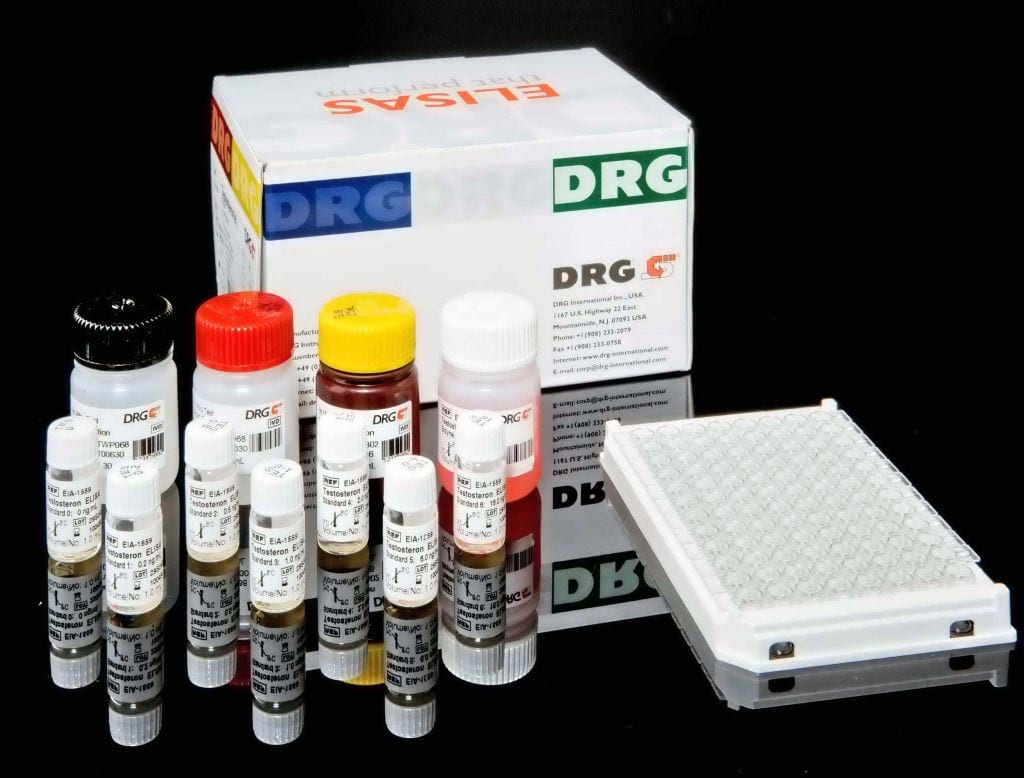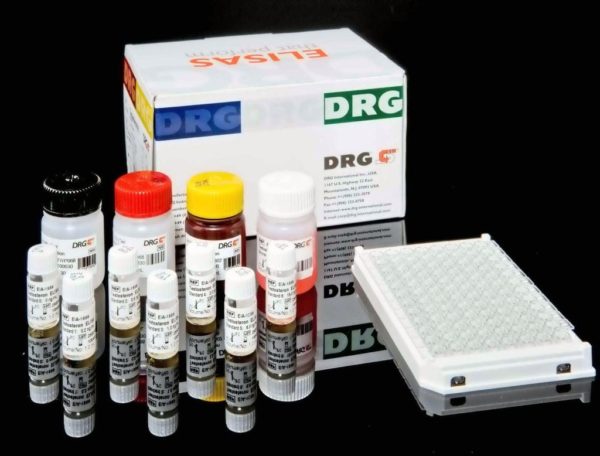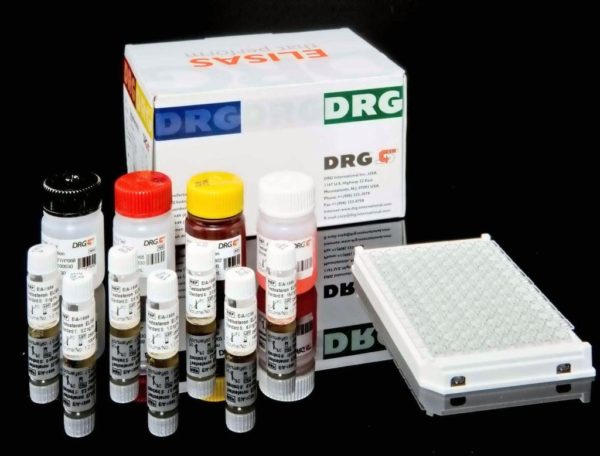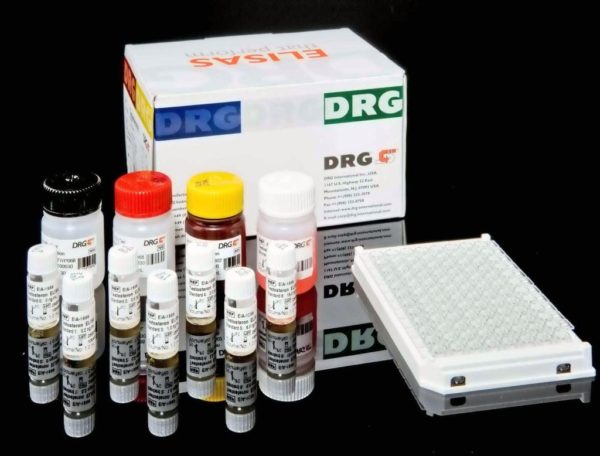Description
Anti-Nucleosome is an ELISA test system for the quantitative measurement of IgG class autoantibodies against nucleosomes in human serum or plasma.
This product is intended for professional in vitro diagnostic use only.
Human nucleosomes are bound to microwells. Antibodies against the coated antigen, if present in diluted patient sample, bind to the respective antigen. Washing of the microwells removes unbound unspecific serum and plasma components. Horseradish peroxidase (HRP) conjugated anti-human antibodies immunologically detect the bound patient antibodies forming a conjugate/antibody/antigen complex. Washing of the microwells removes unbound conjugate. An enzyme substrate in the presence of bound conjugate hydrolyzes to
form a blue colour. The addition of an acid stops the reaction forming a yellow end-product. The intensity of this yellow colour is measured photometrically at 450nm. The amount of colour is directly proportional to the concentration of antibodies present in the original sample.
Antibodies directed against nucleosomes were first described in association with systemic lupus erythematosus (SLE) in 1957, at those times known as “LE cell factor”. In 1986
Hardin suggested, that nucleosomes possibly were important antigens in generating antinuclear antibodies in SLE-patients. But only in 1995 nucleosomes were properly described as autoantigens in systemic autoimmune diseases. Today, anti-nucleosome antibodies are recognised to be especially prevalent in systemic lupus erythematosus and drug-induced lupus. Nucleosomes mainly consist of an octamere of histones (four homo-dimers of H2A, H2B, H3, H4) around which 146 bp of DNA are wound twice. Histone H1 interacts with the nucleosome and together with linked-DNA connects neighbouring nucleosomes. Hence the nucleosome structure is important in the compaction of DNA in the nucleus. Anti-nucleosome-specific antibodies together with lupus anti-dsDNA and anti-histone antibodies directed towards nucleosomes belong to a broad antinucleosome antibody family. Systemic lupus erythematosus (SLE) is a chronic multisystemic disease with unknown aetiology. It is characterised by organ damage of vasculitis origin. The main clinical manifestations are renal diseases (50 %), skin rashes (70 %), arthralgia (90 %), involvement of the central nervous system (CNS) (30 %), polyserositis and cytopenia. Due to the difficulty of diagnosing “SLE”, 11 criteria were set up by the American College of Rheumatology (ACR), in 1982. Of the above mentioned 11 criteria, at least 4 must be diagnosed in order to classify an SLE-patient. It could be demonstrated, that anti-nucleosome antibodies are detected in 84 – 88 % of patients with SLE. And a percentage of 16 – 30 % of patients with lupus has been reported to have anti-nucleosome antibodies without anti-dsDNA and anti-histone antibodies. It has been reported that anti-nucleosome immunoglobulin G antibodies are a more sensitive marker of SLE than anti-dsDNA, and are almost exclusively found in lupus, scleroderma, and mixed connective tissue diseases. Furthermore, it has been shown recently, that antinuclear autoantibodies complexed to nucleosomes can bind to heparan sulphate in the glomerular basement membrane (GBM) via the histone part of the nucleosome in SLE nephritis.




